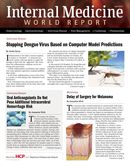Finasteride for Alopecia: Scrutinizing Study Results
For patients with Androgenic Alopecia (AGA), Finasteride is a popular treatment option.

For patients with Androgenic Alopecia (AGA), Finasteride is a popular treatment option.
A recent study looked at whether safety reporting for the medication has been effective in treating these patients.
According to the study results published in the Journal of the American Medical Association, a pair of meta-analyses found flaws within the reports completed thus far. The researchers looked at several factors including how adverse events were reported, the number of adverse events reported, and the types of events both in the medication and placebo groups.
Proper reporting is important, the authors concluded, because, “Clinicians depend on clinical trial reports as the definitive source of information on drug toxicity.”
Using a quality scale of adequate, partially adequate, or no events reported, the studies were graded based on their results and the overall data. None of the 34 clinical trials evaluated received a grade of adequate for safety reporting. Of the total group just 19 were deemed partially adequate while 12 more were determined to be inadequate for their safety reporting. Three of the trials reported no adverse events at all.
“Published reports of clinical trials provide insufficient information to establish the safety profile for finasteride in the treatment of AGA,” the authors concluded. The quality of reporting for safety was based on the scale of Ioannidis and Lau. Adequacy was based on whether there was “an explicit toxicity scale to grade adverse event severity and reported numbers and/or rates of occurrence for each specific type of adverse event per study arm.”
Using funnel plots and seeing an asymmetric result to look at the data, the study authors noted a “bias toward lower odds ratio for sexual adverse effects, suggesting systematic under detection.”
The trials were evaluated based on several factors including design, dosage, sample size, ages of the patient pool, duration, and withdrawal rates among others. Two observers were also used to compare the analysis of the data.
The authors additionally noted a lack of recognition of blinding in the trials. Once again, none of the trials were deemed to have accomplished this adequately — 18 disclosed conflicts of interest, and 19 were at least partly funded by the manufacturer of the drug.
Patients were evaluated for a period of one year or less in 26 of the 34 studies presenting other questions according to the researchers. In a patient pool of just over 5,700 men the authors reported those who were treated with 1.25 mg/d or less just 31% med inclusion criteria for the trials according to the manufacturer’s prescription information. Also, in that group 33% took the medication for more than a year.
Overall, the authors reported there were more questions than answersin the trials.
“Available toxicity information from clinical trials of finasteride in men with AGA is very limited, is poor of quality, and seems to be systematically biased.” They reported. “In a cohort of men prescribed finasteride for routine treatment of AGA, most would have been excluded from the pivotal studies that supported US Food and Drug Administration approval for AGA.”
Looking at the results of the trials and their reporting, the authors noted serious concerns for any similar trials to be conducted in the future. “This opportunity to identify and characterize drug toxicity may be lost when investigators do not use validated, effective methods for detecting adverse events, grading their severity, and evaluating casualty,” they noted.
Citing a specific example the authors found that just one of the trials included found a “strong association,” between the medication and depression. This was also the only study, which they said, “Used validated methods to assess depression in men.” Just one other study highlighted “mood disorder,” as an adverse event, and considered it to be “not significant.”
